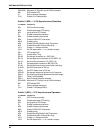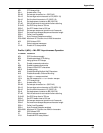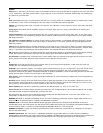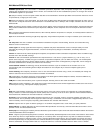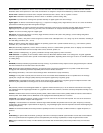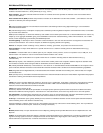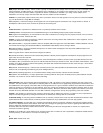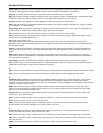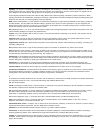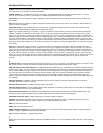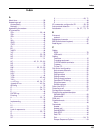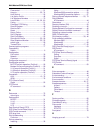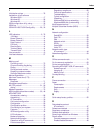
100
MultiModemISDN User Guide
packet mode—The switching of chunks of information for different users using statistical multiplexing to send them over the same
transmission facility. ISDN packet mode capabilities are based on the ITU-TSS Recommendation X.25 procedures.
parity bit—An extra bit attached to each byte of synchronous data used to detect errors in transmission.
PBX (private branch exchange)—A telephone exchange located on the customer’s premises. The PBX provides a circuit switching facility
for tlephone extension lines within the building, and access to the public telephone network. See also
exchange
.
P-channel (PCHAN)—The ISDN physical channel identification; contrast logical channel or virtual channel.
PDN (public data network)—A packet-switched network that is available to the public for individual (subscriber) use. Typically, controlled
by a government or a national monopoly.
Plug and Play (PnP): A technology for configuring I/O devices to use non-conflicting resources in a host. Resources managed by Plug
and Play include I/O address ranges, memory address ranges, IRQs, and DMA channels.
port—A location for input or output data exchange. Computers, muxes, etc. have ports for various purposes.
PPP (Point to Point Protocol)—A protocol that lets a computer user access a TCP/IP address using an ISDN terminal adapter or a high-
speed modem over a standard telephone line.
PRI (Primary Rate Interface)—One
of two forms of ISDN service. PRI provides 23 64 Kbps B-channels for video, voice or data, and one 64 Kbps D-channel for control
information. Usually used to connect high-cpacity CPE, such as PBXs, to the network. Also called
23B+D
in the U.S. and
30B+D
in Europe.)
See also
ISDN
and
BRI
.
primitive—An abstract representation of interaction accross the access points indicating that information is being passed between the
service user and the service provider. The OSI Reference Model defines four types of primitives: Request, Indication, Response and
Confirm.
PSTN (public switched telephone network)—The group of circuit-switching voice carriers, which are commonly used as analog data
communications services. A worldwide public voice telephone network that is used as a telecommunications medium for the transmission of
voice, data and other information.
pulse dialing—One of two methods of dialing a telephone, usually associated with rotary-dial phones. Compare with
tone dialing
.
PVC (permanent virtual circuit)—A connection between two endpoints dedicated to a single user. In ISDN, PVCs are established by network
administration and are held for as long as the user subscribes to the service.
Q
Q.921—The ITU-T recommendation for user-network interface layer 2 specifications for D-channel signaling. Similar to LAPD. See also
ISDN
.
Q.931—The ITU-T recommendation for user-network interface layer 3 specifications for D-channel signalling. See also
ISDN
.
R
R reference point—Establishes the boundary between non-ISDN compatible equipment (TE-2) and the IDN network. TAs are used to
convert the communication protocol used by the non-ISDN termnials to the desired BRI or PRI protocol. Non-ISDN (TE2) terminal
equipment connects to IDN at the R-Reference point with a TA. (This interface may follow the RS232 or V.35 specification.) Also called the
R interface. (Contrast
S reference point
.)
RAM (random access memory)—A computer’s primary workspace. All data must be stored in RAM (even for a short while), before
software can use the processor to manipulate the data. Before a PC can do anything useful it must move programs from disk to RAM.
When you turn it off, all information in RAM is lost.
reference point—A connection point between ISDN equipment classes (rather than the specific protocol of the interconnection). Can
include R, S, T, and U reference points.
RJ-11—An industry standard interface used for connecting a telephone to a modular wall outlet; comes in 4-and 6-wire packages.
RJ-45—An 8-wire modular connector for voice and data circuits.
RPOA (recognized private operating agency)—A corporation, private or government-controlled, that provides telecommunications
services. RPOAs, such as AT&T, participate as non-voting members in the ITU-T.
S
S reference point—Provides the connection between NT2 equipment and the TA or TE-1. Can provide both primary and basic rate
services. Also called the S-interface. (Contrast
R-reference point
.)
SAP (service access point)—A point at which the services of an OSI layer are made available to the next higher layer. See also
SAPI
.
SAPI (service access point identifier)—A logical point at which data link layer services are provided by a data link layer entity to a layer 3
entity. See also
SAP
.
service—The requirements offered by an RPOA to its customers to satisfy specific telecommunications needs.



